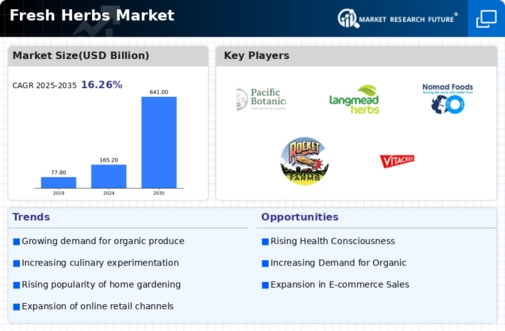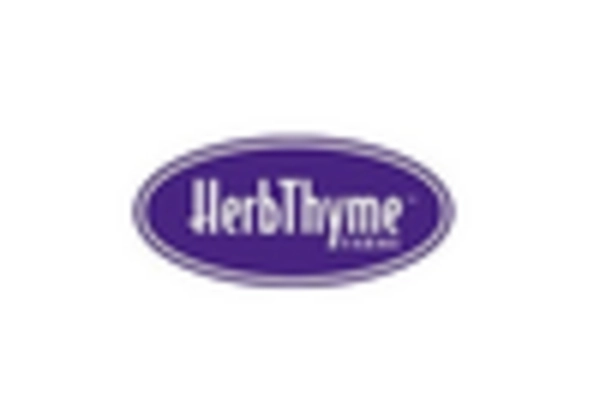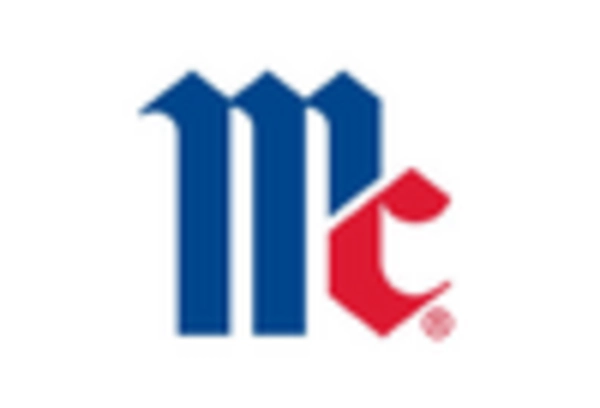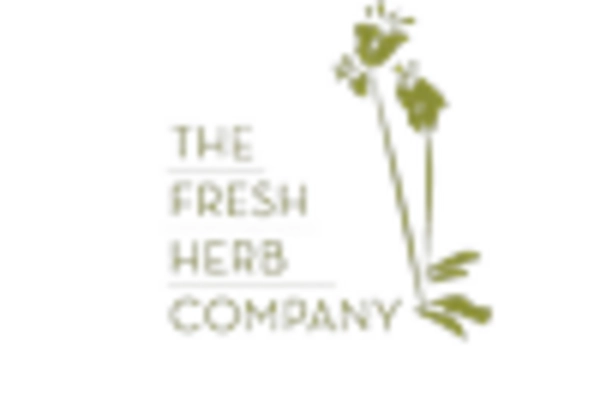Market Share
Fresh Herbs Market Share
In the flourishing Fresh Herbs market, devising effective market share positioning strategies is pivotal for companies seeking to distinguish themselves and flourish in this dynamic sector. These strategies comprise a diverse set of elements tailored to capture consumer attention and loyalty, offering a unique and aromatic herbaceous experience. Product diversity is a cornerstone in the Fresh Herbs market. Successful companies continually innovate by introducing new herb varieties and blends to cater to evolving culinary trends. From classic staples like basil and cilantro to more exotic options such as lemongrass and mint, offering a wide array of fresh herbs ensures that companies remain competitive and can attract a broad consumer base with varying tastes and preferences. Adapting to emerging culinary trends and consumer preferences ensures that fresh herb brands can secure a prominent market position. Pricing strategies play a pivotal role in market share positioning within the Fresh Herbs sector. Consumers often associate the value of fresh herbs with both quality and affordability. To attract a broad customer base, companies implement competitive pricing strategies, explore bundling options, and consider loyalty programs. Providing value packs or convenient herb combinations can also enhance consumer appeal, fostering customer retention and increasing market share. Branding and marketing efforts are fundamental in establishing a strong market presence in the Fresh Herbs industry. Beyond the straightforward presentation of herbs, effective branding involves creating a narrative that resonates with consumers. Engaging marketing campaigns through various channels, including social media and collaborations with chefs or food influencers, help build brand visibility and loyalty. Emphasizing factors such as freshness, organic cultivation practices, and the convenience of pre-packaged herbs can set a brand apart, contributing to increased market share. Customer experience is a critical factor in the Fresh Herbs market, where consumers often seek not only high-quality products but also an enjoyable shopping experience. Companies that focus on providing a positive customer experience, from user-friendly packaging to clear labeling and availability in convenient locations, are likely to foster customer loyalty. Ensuring consistent freshness and quality contributes to positive word-of-mouth, impacting market share as consumers are more likely to choose a brand that consistently delivers a delightful herb-buying experience. Sustainability initiatives have become increasingly important in the Fresh Herbs industry. Consumers are more environmentally conscious and seek brands that prioritize sustainable farming practices and eco-friendly packaging. Companies that emphasize responsible sourcing, reduced environmental impact, and ethical production practices can attract a growing segment of environmentally conscious consumers. Aligning with sustainability trends not only contributes to positive environmental outcomes but also enhances market share by appealing to socially responsible consumers. Strategic collaborations and partnerships offer opportunities for fresh herb companies to expand their market share. Collaborating with grocery stores, restaurants, or meal kit services can result in increased product visibility and joint marketing efforts. Co-branded initiatives or exclusive herb blends developed through partnerships can create excitement, attracting new customers and solidifying market positioning. Geographical expansion is another strategy employed by Fresh Herb companies to increase market share. This involves expanding distribution networks, entering new markets, and ensuring availability in high-traffic areas. Leveraging online platforms for e-commerce and delivery services also extends the reach of fresh herb brands, making their products accessible to a broader consumer base.

















Leave a Comment